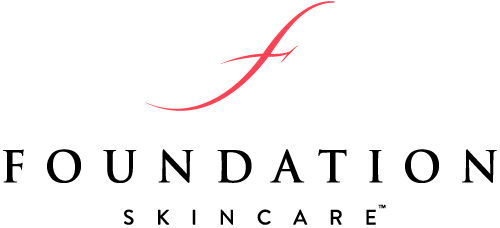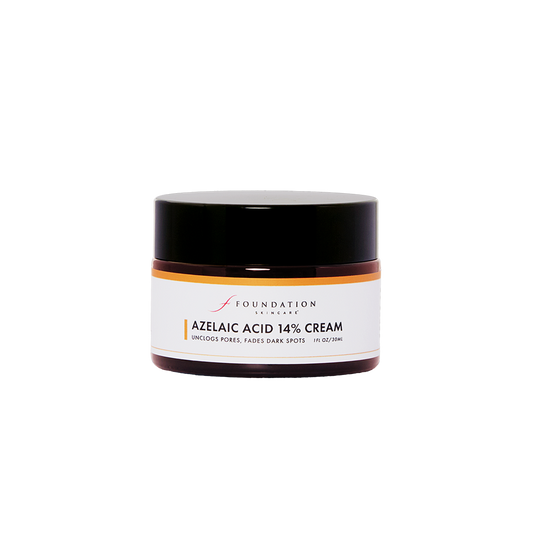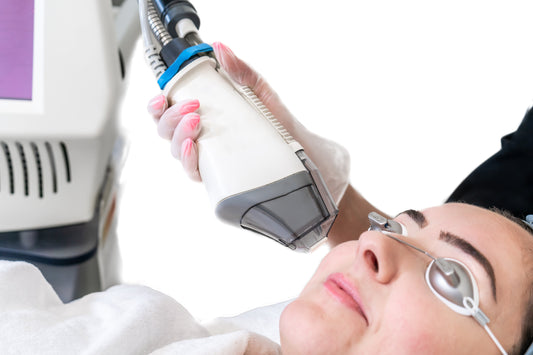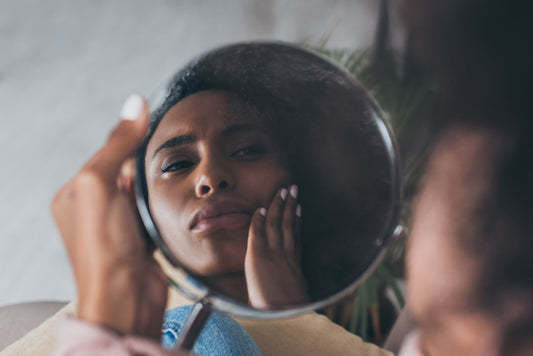Rosacea is a skin condition that causes redness, flushing, enlarged blood vessels, and often, acne-like bumps across the face, called acne rosacea.1 If you have it, you know that it can be frustrating, embarrassing, and sometimes feel downright debilitating if a flare up is severe enough.
And while we wish there were some fast-acting, magical pill that would immediately and forever banish rosacea symptoms, unfortunately, that’s not the case. For now, the best we can do is use gentle, rosacea-friendly products like Foundation Skincare’s Azelaic Acid 14% Cream, wear sunscreen when going outside, avoid harsh products that will damage the skin’s barrier, and of course, we can better manage our diet and trigger foods.
Understanding Rosacea: A Common Skin Condition
Rosacea symptoms often show up as facial redness, flushing, visible blood vessels, and acne-like breakouts, called acne rosacea. It affects more than 14 million people in the U.S. alone and often comes on after the age of 30, mostly impacting females with fair skin .1
Some people may experience rosacea symptoms nearly all of the time, while others will only experience a flare up of symptoms when something triggers it. Some of the most common rosacea causes include sun exposure, extreme temperatures, stress, certain skin products, hormonal changes, and diet .1
The good news is, you can manage your exposure to several of these rosacea causes, including avoiding the foods and beverages that cause a flare-up.
But how does diet trigger a rosacea flare-up in the first place?
The Role of Diet in Rosacea Flare-Ups
To understand how diet impacts rosacea, let’s take a quick look at how rosacea works in the body in the first place. (Big disclaimer: There is still a lot we don’t know about rosacea, so this information is what most scientists believe, at this time.)
We know that inflammation contributes to some key rosacea symptoms, like redness and rash.2 Certain environmental stressors like UV light from the sun, exercise, stress, heat, and some types of microbes on the skin can increase inflammation in the body, which for people with very sensitive skin, may cause the symptoms of rosacea .2,3
Another big cause of inflammation in the body? Certain types of food.
The most frequently reported food triggers of rosacea include alcohol, spicy foods, foods containing “cinnamaldehyde” (like tomatoes, citrus fruits and chocolate), hot drinks, and foods containing histamine (like cheese, wine, or processed meat.) .4
These foods and drinks can cause an inflammatory response in the body, which on the skin, looks like dilating of the blood vessels, flushing, and swelling .4
The good news is, while there are some foods that can trigger rosacea flare ups (the long list of which, we’ll give you in a moment), there are also plenty of foods that can help minimize rosacea symptoms.
Rosacea-Friendly Foods & What to Include in Your Diet
To curb your rosacea symptoms, you’ll want to implement a diet that is largely anti-inflammatory. According to experts and Johns Hopkins’ Medicine, some of the best anti-inflammatory foods include:
- Fatty fish — tuna, salmon, herring, etc. are rich in Omega 3s5
- Nuts and seeds — These are also rich in Omega 3s5
- Fruits rich in antioxidants — blueberries, strawberries, blackberries5
- Vegetables rich in vitamin C — broccoli, brussel sprouts, potatoes6
- Gut-healthy foods — kimchi, asparagus, bananas, chicory root, yogurt (or non-dairy yogurt if milk exacerbates your symptoms)5
- (Non-gluten) whole grains — quinoa, brown rice, oats, etc .5
If this sounds a lot like the “Mediterranean Diet” to you, you’re not wrong. In fact, a recent study 7 showed that rosacea patients who followed a Mediterranean-like diet had a reduction in their rosacea symptoms.
Identifying & Avoiding Trigger Foods
We mentioned earlier that we’d be giving you the whole, big list of rosacea-triggering foods. Remember, rosacea causes are different from person to person, and some of these foods may work just fine for you. However, these are the most common culprits behind rosacea flare-ups, according to the National Rosacea Society:
Additionally, studies show that diets high in processed or sugary ingredients are more likely to cause rosacea flare-ups .4
Azelaic Acid 14% Cream
• Brightens skin, fades brown spots
• Unclogs pores, improves texture
Sale price
$45
How to Develop a Holistic Approach to Rosacea Management
Like we said, we don’t currently have a magical pill that will forever cure rosacea symptoms. (And if somebody is trying to sell you one, don’t buy it!) The best we can do for now, is manage our rosacea symptoms with a holistic approach.
Here’s what that can look like:
- Stick to a healthy, well-balanced, anti-inflammatory diet
- Manage your levels of stress with things that relax you
- Always protect your skin from the sun with a good sunscreen and a hat
- Limit your exposure to extremely hot and extremely cold temperatures when you can
- Avoid your particular trigger foods and limit alcohol consumption
- Use a daily, gentle rosacea-friendly product like Foundation Skincare’s Azelaic Acid 14% Cream
Really quick, let’s talk about azelaic acid, the rosacea-reducing superstar. Azelaic acid is a powerful antimicrobial and anti-inflammatory ingredient that has been clinically shown9 to reduce rosacea symptoms like redness and acne rosacea. Foundation Skincare’s azelaic acid is unique in that it is 14 percent strength – just under the 15 percent of prescription creams. And though it is potent, it is also extremely gentle and hydrating, making it safe to use up to twice daily for even the most sensitive, rosacea-prone skin.
Over time, our azelaic acid cream should minimize redness, inflammation, reduce acne rosacea, and can even lighten old acne scars, brown spots, and melasma.
You might also consider layering your azelaic acid cream with some other rosacea-friendly Foundation Skincare products. Niacinamide Lotion 10% can calm and repair inflamed skin and Hyaluronic Acid Lotion is a gentle but nourishing daily moisturizer, safe for all skin types.
Just be sure when layering skincare products you’re putting the thinnest product on first and then adding on layers according to thickness. Luckily, these products aren’t sticky nor should they pill, so you can use them seamlessly together and underneath makeup.
Find more tips and resources on maintaining healthy hair and skin in the FS Blog.
References:
-
https://my.clevelandclinic.org/health/diseases/12174-rosacea
-
https://www.niams.nih.gov/health-topics/rosacea
-
https://www.cbsnews.com/philadelphia/news/excessive-heat-can-increase-pain-inflammation-for-people-with-various-health-conditions-including-arthritis-heart-problems/
-
https://www.ncbi.nlm.nih.gov/pmc/articles/PMC8794493/
-
https://www.hopkinsmedicine.org/health/wellness-and-prevention/anti-inflammatory-diet
-
https://www.nhs.uk/conditions/vitamins-and-minerals/vitamin-c/
-
https://pubmed.ncbi.nlm.nih.gov/36819686/
-
https://www.rosacea.org/patients/rosacea-triggers/factors-that-may-trigger-rosacea-flare-ups
-
https://onlinelibrary.wiley.com/doi/full/10.1111/jocd.15923





